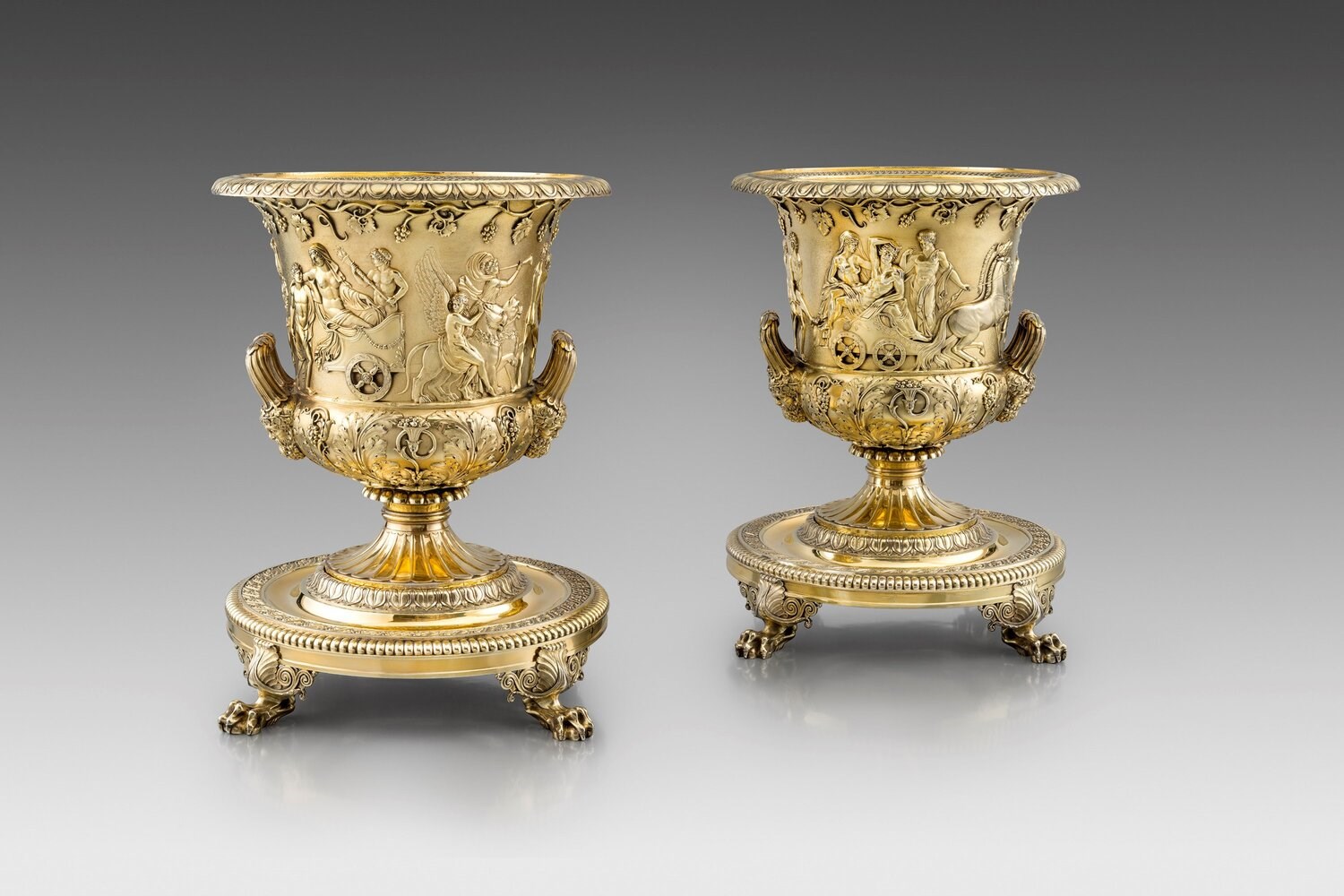Where the Value of Silver Lies
23 September 2021
ShareDesign, age, and provenance can all have a part to play in the value of antique silver.
Charles Hartley
Charles Hartley is the Director of Hartleys Auctions Ltd. and specialises in arms, militaria, fieldsports and taxidermy.

A Queen Anne silver punch strainer, Henry Tolcher of Plymouth, Exeter, c.1710-5, 16.5cm long.
Image courtesy of Michael Baggott.
As an auctioneer, many summers have passed cruising around the sunny countryside bouncing from valuation to valuation. You never know what you might find and this truly is the best part of my job, from dusty houses filled with ancient oak to sleek modernist interiors accented with Danish teak and impressionist art. Though this presents a patchwork quilt of variety, there is always one constant, my late father’s leather gladstone valuation bag and its contents. Other than the pens and paper, possibly the three most highly used pieces of equipment in this bag of tricks would be my eyeglass, silver scales and my pocket book of hallmarks barely holding onto its cover. But what is the true value to those silvery items hidden amid the bric-a-brac, that have me rifling through sideboards and flipping over salvers?
Easy, you may cry, a quick google and you will see a multitude of websites listing bullion prices changing on a daily basis. Silver is of course often valued by weight and though this is an oversimplification, it does bode true, though typically only with damaged or very dull items. One afternoon working at my desk one of our trusted house clearers appeared at my door with a glint in his eye. He’d been sent to a house that I had not visited, this is not typical as usually I would value the property first, but in this case the items were in such a poor state, that the solicitor had deemed it unfit for sale and in need of a heavy hand. He was 99% right: upholstery was moth eaten, furniture wormed and mold ravaged the paintings. Though what was that brick supporting the rotting settee? It was a 999.9 grade 5000g solid bar of silver from the Argor-Haraeus Mint - which went to auction selling by weight for £3,388.
But please don't think this means it’s time to take grandma’s silver tea set to the nearest “cash for gold” store. Bullion price is only one part of the equation which is used to value an item, as so much more in the nature of the piece could add to this.
The design credentials of silver will always impact the value, be it a Mappin & Webb classic or a Georg Jensen statement of arts & crafts design, such as a 20th century tazza I auctioned in March. Its “melt price” would only add up to £540, but on the day it raised over eight times that, seeing £4,598. This same category could also cover “novelty” silver, where small quirky pieces demand a high value with avid collectors desperate to fill a certain gap in their cabinet - like a rabbit pepperette by Sampson Mordan of London 1899, which I sold in 2019 for almost 23 times the melt price at £700.

Paul Storr (1771 - 1844), a pair of silver-gilt wine coolers & stands, silver-gilt , George III, London, 1809, Maker’s mark of Paul Storr, H: 35.5 cm.
Image courtesy of Koopman Rare Art.
Another major factor is age. “Flog It” star Michael Baggott became enamored with the world of hallmarks. He points out that “hallmarking was brought in to assure that no one sold substandard wares to an unsuspecting medieval public and is possibly the oldest bit of consumer protection. Although only introduced to assure purity, happily these marks can allow anyone to know who submitted an object for assay, where in the country it was marked and most importantly when. This immediately gives so much historical information, making silver collectors amongst the luckiest in the field of collecting”. Proving the point, amongst Michael’s collection is this small West Country orange strainer. Weighing only 2oz 9dwt, the value of the silver would be around £35. However, as a very rare provincial Queen Anne example, by Henry Tolcher of Plymouth (c.1710-15), it is worth roughly a hundred times more at £3,750.
But if you truly want to stretch the value of silver you have to not only look at the age and design of a piece, but its provenance. No better place to represent this is Koopman Rare Art, which is one of the world’s leading dealers specialising in antique silver, gold boxes and objets de vertu. Director Lewis Smith explains that “one of the great points with important silver is that it was often made for important families and individuals. Secondly, it often was designed by the great names to fit into houses that were being built at the height of fashion of the day”. Asking them for examples, Lewis spoiled me for choice, but my favourite amongst their offerings was a pair of Paul Storr wine coolers. The identical model is displayed in the royal collection, the V&A and by strange coincidence The White House, Washington. These were made around the time that the British burnt the building down during the War of 1812 and since their creation have held a long list of aristocratic owners and are valued in the hundreds of thousands.

